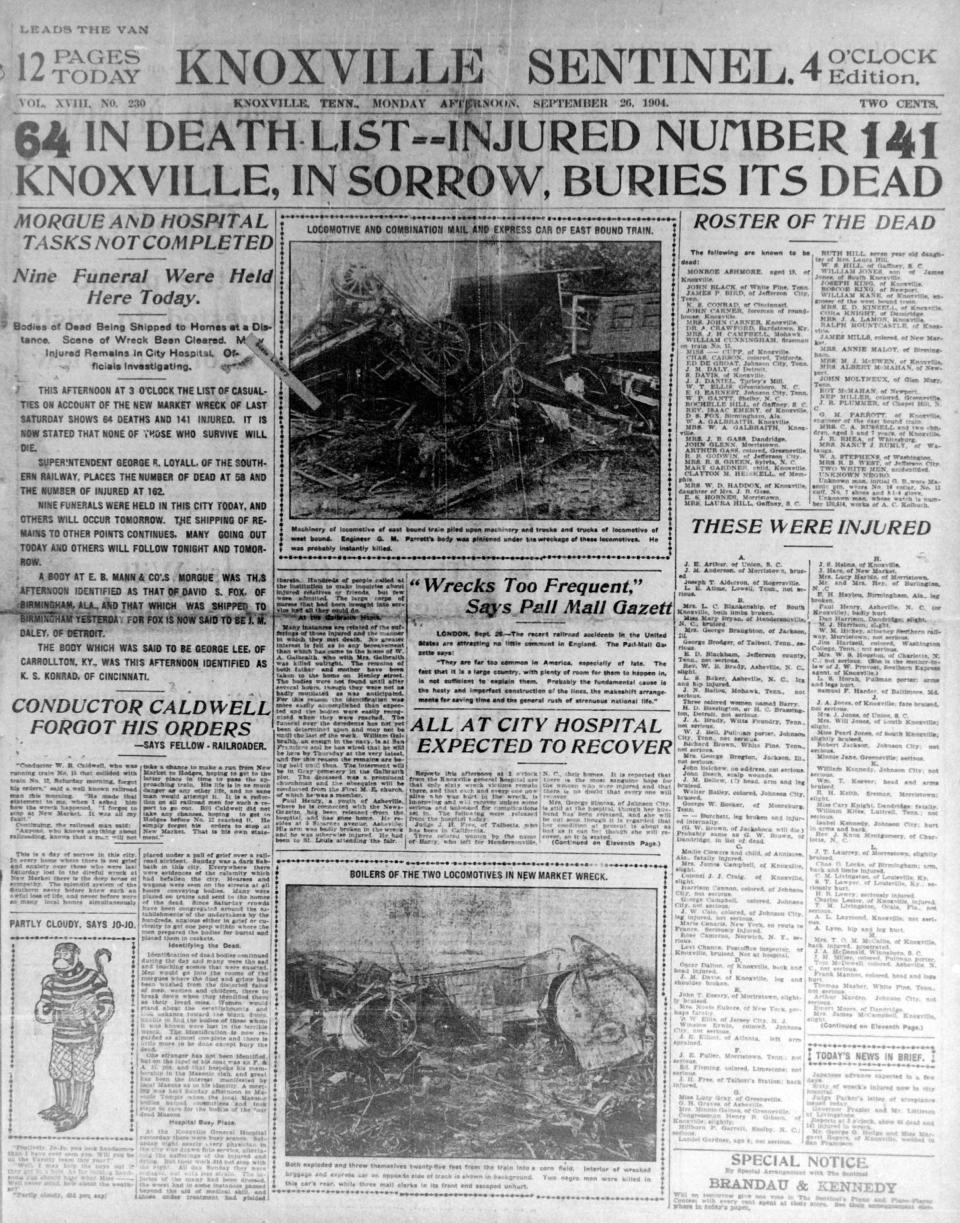Knoxville hospitals have come a long way since the first 20-patient facility | Opinion
A few months ago the News Sentinel listed the top 18 medical centers in the area, ranked according to the number of licensed beds, with the University of Tennessee Medical Center at No. 1 with 685 beds. North Knoxville Medical Center had 628, Fort Sanders had 541, and Parkwest ranked fourth with 492 beds. Those facilities continue their growth and expansion as we watched the demise and closure of Baptist and St. Mary's hospitals.
Medical care in Knoxville has come a long way since early efforts to establish a public hospital at the corner of Depot Avenue and Broadway in December 1883. It was a second-floor facility with four rooms that could accommodate 20 people. In early 1884 the hospital was moved to a larger space in the Old Strong Home at the corner of State Street and Cumberland Avenue and was there 18 years.

The Knoxville Journal of Jan. 19, 1890, said, "The City Hospital of Knoxville is a credit to her. The many unfortunates who find a quiet, cheerful home there when sick can best speak its praise." It went on to report: "There are six patients in the hospital, one female and five males. Three are white and two are colored. During the year previous there were sixty persons admitted there. There were thirteen deaths."
Knoxville's red-letter day in health care came on April 14, 1902, with the formal opening of the Knoxville General Hospital. It cost $55,224.75, of which the Women's Hospital Board paid $9,598.22 to purchase the land for the facility. The ladies then paid for the services of a trained nurse in the hospital for one year.

Your state. Your stories. Support more reporting like this.
A subscription gives you unlimited access to stories across Tennessee that make a difference in your life and the lives of those around you. Click here to become a subscriber.
Hear more Tennessee voices: Get the weekly opinion newsletter for insightful and thought-provoking columns.
But the enthusiasm to build a large hospital was not universal, and those in opposition said there would be nothing but "bats and owls" to occupy the third floor. Fortunately, plans for the structure proceeded. Two years later, on Sept. 21, 1904, the New Market train wreck occurred. There were already 26 patients in the hospital when 106 of the wreck victims were also admitted.
"The hospital was soon seething with humanity and the whole country marveled at Knoxville's ability to care for the wounded so efficiently," said an article at the time.
As it was with the two previous city hospitals, space was made for Black patients, but Black physicians were not allowed to practice at Knoxville General without the supervision of a white physician. That arrangement continued even after the new Negro Wing with 82 beds was added on Sept. 5, 1933. It was erected at a cost of $135,500 with funds from the Rosenwald Fund, the city of Knoxville, Knox County and private donations.

THE LATEST NEWS RIGHT AT YOUR FINGERTIPS
Get the latest local news, sports scores and more directly on your phone. Download the free Knox News mobile app.
A newspaper report from July 26, 1934, said that during the first six months the unit admitted 51 paying patients and 563 charity patients. There were 101 maternity cases, of which 99 were charity.
After the hospital had existed for 38 years, a court order on Nov. 8, 1940, gave Black physicians the right to practice there on their own. The first major surgery conducted by them occurred Nov. 28, 1941, and was done by Dr. Samuel M. Clark Sr. and his son, Dr. J. Hubert Clark.
Robert J. Booker is a freelance writer and former executive director of the Beck Cultural Exchange Center. He may be reached at 865-546-1576.
This article originally appeared on Knoxville News Sentinel: Knox hospitals have come a long way since the first 20-patient facility

